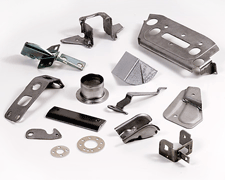Metal stamping involves forming a piece of metal with a dedicated piece of tooling and stamping the piece through a mechanical press. During the metal stamping operation, the upper die is attached to the ram and the lower die is attached to the stationary bolster. As the press is activated, the ram moves vertically towards the bolster to form the piece of metal over the lower die. Metal stamping presses can perform a diverse range of operations such as blanking, piercing, forming and drawing as well as combinations of these processes.

